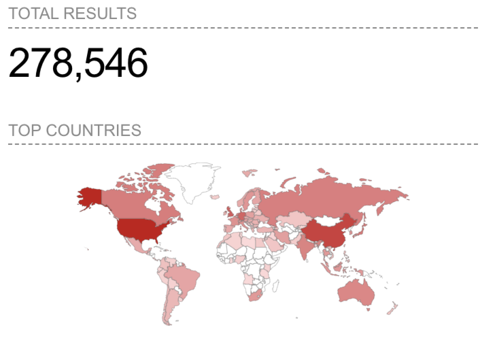In many conversations I have with security and infrastructure leaders, the discussion inevitably turns toward a zero trust project either already underway or set to begin soon. More often than not, this conversation is specifically about zero trust network access (ZTNA), because ZTNA technology has been frequently positioned as the solution for something every team really wants to achieve right now: total replacement of remote access VPNs.
Here’s the complication, though: modern cloud-delivered ZTNA can not be bolted onto a legacy infrastructure, thus it is not a rip and replace-VPN-replacement. For example, in a recent conversation I learned that a CIO’s company employs roughly 1200 call center workers as part of their globally distributed enterprise. Those call center workers still use a legacy on-premises hosted VoIP product.
The CIO explained that his team understands that upgrading to ZTNA is a phased approach that requires modernizing the broader application infrastructure and having a plan to upgrade VoIP to the modern UCaaS. However, that upgrade isn’t scheduled for another two years. In the meantime, they need to maintain a small fleet of VPN infrastructure, which is not ideal. This is not an uncommon scenario.
Fortunately, there’s now a better way to ZTNA.
Today, Netskope is proud to announce ZTNA Next, which will help organizations achieve true full VPN retirement and meet the promise of modernizing technology infrastructure using ZTNA.
Let’s look at why this is a game-changer for a problem almost all security and I&O teams will tackle in the next few years.
Meeting the Promise of Full VPN Retirement
ZTNA is here to stay. Gartner predicts that by 2025, 70% of remote access use cases will be replaced by ZTNA. What’s interesting to note in Gartner’s description is the phrase “use cases.” As with the CIO I mentioned above, ZTNA is intended to be a worthwhile option for many use cases, including VPN replacement. But if some individual VPN replacement use cases are supported by ZTNA and others are not, that ZTNA product is only a partial solution to a full problem.
Let’s take a step back, though. Are all organizations looking to replace VPN? In a word, yes. During the pandemic remote work accelerated, and forward-thinking organizations saw an opportunity to replace legacy remote access VPNs with modern, efficient technology. These legacy VPNs overcomplicate infrastructure and are a hassle for IT teams to manage. Crucially, they are also major security risks because of how vulnerable they are. For example, CVE lists 645 disclosed vulnerabilities related to VPN, 71 of which were disclosed just in 2022. With a variety of remote endpoints accessing networks worldwide, legacy remote access solutions like VPNs unquestionably expand the digital attack surface. For example, our research team leveraged publicly available data to identify more than a quarter of a million instances of publicly exposed infrastructure hosting SSL VPN software and services, worldwide, from just one VPN technology provider. Security teams already know VPNs are vulnerable. But it remains a struggle for enterprises to fully replace this legacy remote access technology with something they can be confident will do the job for all relevant use cases.

Data Source: Shodan Query from March 2023
Cloud-delivered ZTNA is built upon zero trust principles (thus the “ZT” in its name). An aspect of this includes a kind of “inside-out” approach in which an outbound connection from the network containing the application to only the provider makes the application available for remote users. Nothing faces the public internet, holes in firewalls become unnecessary, and applications are shielded from discovery and from abuse. After all, attackers can’t harm what they can’t find.
However, as Gartner has predicted, while this model can serve a majority of private application traffic use cases, this modern way to connect does pose a challenge for legacy applications that require server to client traffic flow, for example, on-premises VoIP and other legacy applications.
It’s important to note here that total VPN replacement doesn’t need to happen all at once and, for most enterprises, also won’t happen all at once. I had another recent conversation with a customer team who told me they had inventoried all their VPN concentrators to help map their entire application landscape and then decide which VPNs it will retire in what sequence.
Organizations will differ in their approach to that sequence. Some might start with applications in a DMZ, for example, while others might start with private resources hosted in public cloud infrastructure. The point is: all VPN use cases need to be eventually solved, such that no VPN infrastructure remains in a fully modernized ZTNA deployment.
We created ZTNA Next to help customers arrive there sooner. It is a new, fully integrated service that provides a clear path to complete replacement of remote access VPNs for all application access use cases, reducing the digital attack surface, enhancing security posture with zero trust principles, and boosting remote worker productivity with seamless and optimized application access experience.
ZTNA Next combines our award-winning Netskope Private Access ZTNA with the power of software-only Netskope Endpoint SD-WAN, allowing organizations to:
- Modernize connectivity and boost security. Shorten the transition period by delivering secure access to legacy applications that require server-to-client or bi-directional traffic connectivity, neither of which were supported by cloud-based ZTNA products that offered only inside-out connectivity.
- Enhance the user experience. With the unified Netskope Client and its smart steering capability, I&O staff can trust that the Netskope Client will connect users to the internal resources they need who then can simply focus on their day jobs.
The integrated endpoint SD-WAN capabilities ensure highly reliable, optimized access to voice and video applications, delivering consistent high-performance access for users working from home.
- Reduce complexity and operational cost. Organizations can fast track their plans to replace legacy remote access VPNs, eliminating the need to maintain separate remote access tools. (This will also dramatically reduce the complex network routing, patching, and hardware maintenance required of legacy VPN infrastructure.)
- Achieve unprecedented visibility and control over applications. Provide crystal-clear visibility into all internal application traffic, which further creates a short list of steps admins can follow to discover modern applications and convert them to ZTNA. (At the same time, the SD-WAN hub remains in place to enable remote access to legacy applications.)
With ZTNA Next, Netskope can enable the complete retirement—not just partial replacement—of remote access VPN for all relevant application access use cases, while enhancing security posture and delivering seamless and optimized application access.
Come visit us at RSA Conference in San Francisco to hear more about what ZTNA Next can do for you, and click here for more details.




 Retour
Retour
















 Lire le blog
Lire le blog